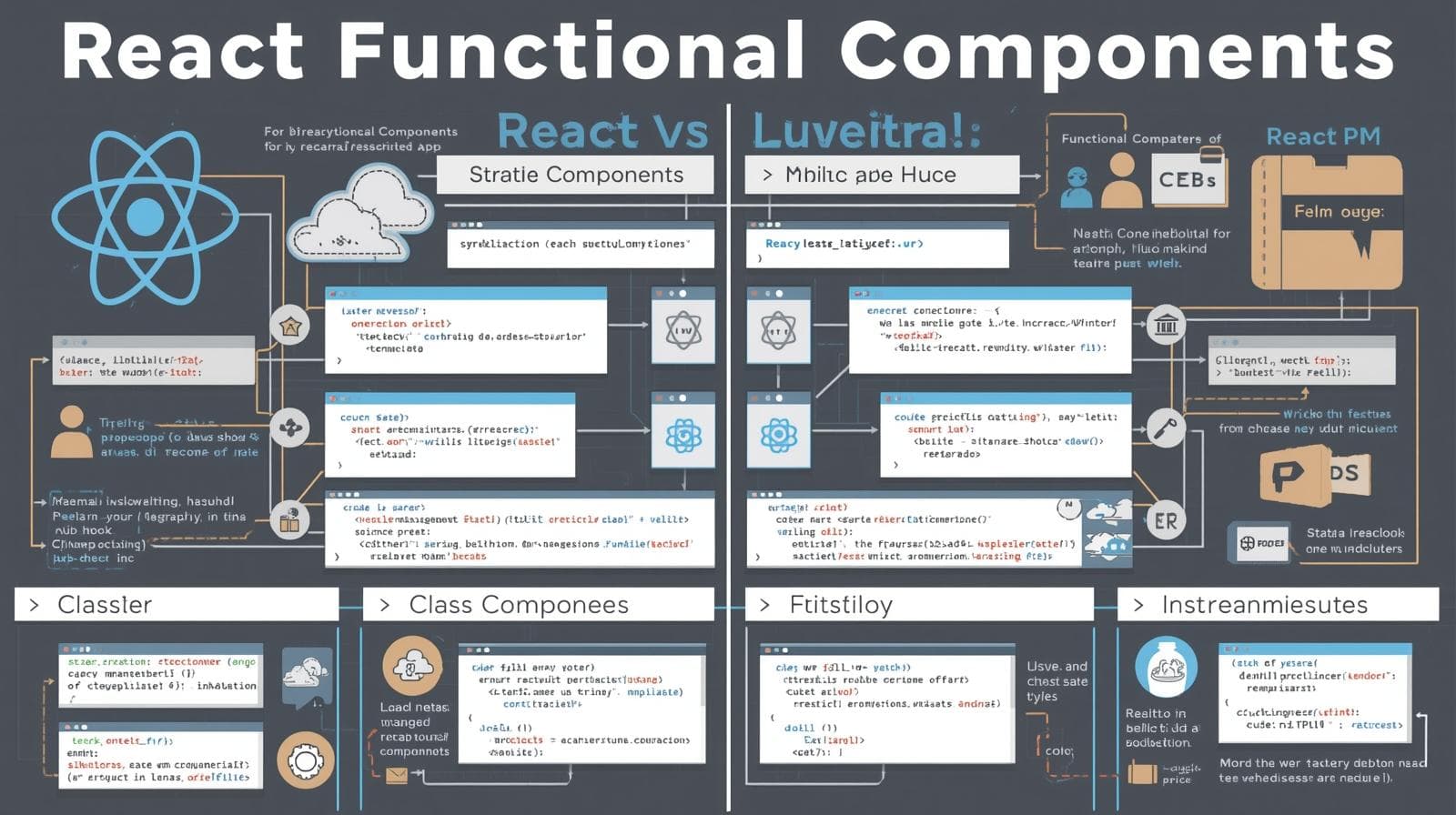Mastering React Checkboxes: A Complete Guide from Basics to Best Practices

Struggling with checkboxes in React? This in-depth guide covers controlled components, handling groups, real-world use cases, best practices, and FAQs. Level up your React skills!

Mastering React Checkboxes: A Complete Guide from Basics to Best Practices
Mastering React Checkboxes: From Single Ticks to Complex Groups
Checkboxes. They seem so simple, right? A tiny square on a screen that you click to mark a choice. But when you start building dynamic web applications with React, these unassuming UI elements can quickly become a source of confusion. How do you track their state? How do you handle a whole list of them? How do you ensure your form data is accurate and easy to manage?
If you've ever found yourself wrestling with event.target.checked or managing an array of selected values, you're in the right place. In this comprehensive guide, we're going to demystify checkboxes in React. We'll move from a simple single checkbox to handling complex, dynamic groups, all while following React's best practices. By the end, you'll be able to implement robust, user-friendly checkbox functionality in any of your projects.
The Core Concept: Controlled vs. Uncontrolled Components
Before we dive into the code, it's crucial to understand React's philosophy of controlled components. In traditional HTML, a form element like a checkbox "holds" its own state.
html
<!-- Plain HTML - Uncontrolled -->
<input type="checkbox" id="subscribe" />
<label for="subscribe">Subscribe to newsletter?</label>The browser manages whether this checkbox is checked or not. To get its value, you'd typically use JavaScript to query the DOM. This is an uncontrolled component in React terms.
React champions a different approach: controlled components. Here, the state of the form element (in this case, the checkbox) is handled by React's state. The input's value is driven by the state, and changes are handled via event handlers. This makes the React state the "single source of truth."
Why Bother?
Controlled components give you immense power. You can:
Instantly validate user input.
Disable a submit button based on checkbox state.
Dynamically change other parts of the UI in response to a tick.
Easily reset the entire form.
Implementing a Single Checkbox
Let's start with the most basic scenario: a single, standalone checkbox. A classic example is a "Subscribe to newsletter" option.
jsx
import { useState } from 'react';
function NewsletterSignup() {
// 1. Create state to hold the checkbox's value
const [isSubscribed, setIsSubscribed] = useState(false);
// 2. Handler for when the checkbox is clicked
const handleCheckboxChange = (event) => {
// event.target.checked is a boolean (true/false)
setIsSubscribed(event.target.checked);
};
// 3. Handler for form submission
const handleSubmit = (event) => {
event.preventDefault();
console.log('User subscribed:', isSubscribed);
// Here you would send `isSubscribed` to your API
};
return (
<form onSubmit={handleSubmit}>
<label>
{/* 4. The controlled component:
- `checked` is driven by state
- `onChange` updates the state
*/}
<input
type="checkbox"
checked={isSubscribed}
onChange={handleCheckboxChange}
/>
Subscribe to our weekly newsletter?
</label>
<button type="submit">Sign Up</button>
{/* Displaying the current state for demonstration */}
<p>Current subscription status: {isSubscribed.toString()}</p>
</form>
);
}
export default NewsletterSignup;Let's break down the key steps:
State: We use the
useStatehook to create a state variableisSubscribed, initialized tofalse.Handler: The
handleCheckboxChangefunction is called every time the checkbox is clicked. It receives the event object, and we useevent.target.checkedto update our state.Binding: We connect the state to the checkbox using two props:
checked={isSubscribed}: This makes the checkbox reflect the current state. IfisSubscribedistrue, the box is ticked.onChange={handleCheckboxChange}: This tells React what to do when the user interacts with the checkbox.
This pattern is the foundation of all form handling in React. Mastering this is your first step towards building complex, interactive forms. To learn professional software development courses such as Python Programming, Full Stack Development, and MERN Stack, which dive deep into these fundamental concepts, visit and enroll today at codercrafter.in.
Leveling Up: Handling Multiple Checkboxes (The Dynamic Group)
Things get more interesting when you have a group of checkboxes, like selecting interests or filtering products. The goal is to collect an array of the selected values.
The strategy is simple but powerful: we will store our options in an array (often fetched from an API), and our state will be an array that holds only the selected values.
jsx
import { useState } from 'react';
function InterestsSelector() {
// This could come from an API or a config file
const allInterests = [
{ id: 'tech', name: 'Technology' },
{ id: 'sports', name: 'Sports' },
{ id: 'music', name: 'Music' },
{ id: 'travel', name: 'Travel' },
];
// State will be an array of selected interest IDs (e.g., ['tech', 'music'])
const [selectedInterests, setSelectedInterests] = useState([]);
// This is the crucial handler for the group
const handleInterestChange = (event) => {
const interestId = event.target.value;
const isChecked = event.target.checked;
setSelectedInterests(prevSelected => {
// If the checkbox is checked, add its value to the array
if (isChecked) {
return [...prevSelected, interestId];
} else {
// If unchecked, remove its value from the array
return prevSelected.filter(id => id !== interestId);
}
});
};
const handleSubmit = (event) => {
event.preventDefault();
console.log('Selected Interests:', selectedInterests);
// Send selectedInterests to your backend
};
return (
<form onSubmit={handleSubmit}>
<h3>Select Your Interests</h3>
{allInterests.map(interest => (
<label key={interest.id} style={{ display: 'block' }}>
<input
type="checkbox"
value={interest.id} // The value we use to identify the checkbox
checked={selectedInterests.includes(interest.id)} // Check if this ID is in the selected array
onChange={handleInterestChange}
/>
{interest.name}
</label>
))}
<button type="submit">Save Interests</button>
<p>You have selected: {selectedInterests.join(', ')}</p>
</form>
);
}
export default InterestsSelector;The magic here is in the handleInterestChange function and the checked prop.
value={interest.id}: Each checkbox has a unique value (the interest ID).checked={selectedInterests.includes(interest.id)}: For each checkbox, we check if its value exists in theselectedInterestsarray. If it does,includes()returnstrueand the box is checked.handleInterestChange: When a box is ticked, we check if it was checked or unchecked. We then either add its value to the state array (using the spread operator...) or remove it (usingfilter).
This pattern is scalable and clean. You can have 5 or 500 checkboxes, and the logic remains the same.
Real-World Use Cases & Best Practices
Use Case 1: Data Table Row Selection
A common pattern in admin dashboards is selecting multiple table rows for bulk actions (delete, archive, etc.). Each row has a checkbox, and there's often a "select all" checkbox in the header. The state would be an array of selected row IDs.
Use Case 2: Permission Management
Think of a user role editor where you can grant or revoke specific permissions (e.g., "Read", "Write", "Delete"). Each permission is a checkbox. The state would be an object or a nested array representing the selected permissions for a role.
Best Practices:
Use
onChange, notonClick: Always use theonChangeevent for checkboxes. It's the standard and works consistently with keyboard navigation.Always use a
<label>: Associate a label with your checkbox using thehtmlForattribute or by wrapping the input inside the label. This improves accessibility and usability—users can click the text to toggle the checkbox.jsx
// Good <label> <input type="checkbox" /> I agree to the terms. </label> // Also Good <input id="terms" type="checkbox" /> <label htmlFor="terms">I agree to the terms.</label>Lift State Up: If the checkbox state is needed by multiple components or a parent, lift the state up to a common parent or use a state management library. This is a core principle of React that you'll master in our comprehensive Full Stack Development course at codercrafter.in.
Use Descriptive State Names: Name your state variables based on what they represent (e.g.,
isAccepted,selectedCategories), not justcheckedorvalues.
Frequently Asked Questions (FAQs)
Q1: Can I use defaultChecked instead?
Yes, defaultChecked is the uncontrolled component equivalent of the checked prop. It sets the initial value but doesn't control it afterwards. For dynamic behavior, always prefer the controlled component pattern with checked and onChange.
Q2: How do I create a "Select All" checkbox?
The "Select All" checkbox's state is derived. It should be:
Checked if the number of selected items equals the total number of items.
Indeterminate (a little dash) if some, but not all, items are selected. (This requires setting the
indeterminateproperty via aref).Its
onChangehandler should either add all items to the state array or clear the array entirely.
Q3: My checkbox isn't updating visually. What's wrong?
This is almost always because you've created a controlled component but are not updating the state correctly. Double-check that:
You are using
onChange, notonClick.Your state update function (e.g.,
setIsChecked) is being called correctly.The
checkedprop is correctly bound to the state variable.
Q4: How do I handle checkboxes with other form data?
When using a form library like Formik or React Hook Form, they provide their own methods for handling checkbox state (often via a register function or a Field component). The underlying principle of controlled components remains the same.
Conclusion
Checkboxes in React, while initially tricky, become straightforward once you internalize the controlled component pattern. Remember the golden rule: the state drives the UI, and user interactions update the state.
For a single checkbox, manage a boolean state.
For a group of checkboxes, manage an array of selected values.
Always use
onChangeand pair your checkboxes with<label>s for accessibility.
By following these patterns and best practices, you can build intuitive and robust forms that provide a great user experience. The concepts you've learned here are not just for checkboxes; they form the bedrock of all interactive form handling in modern React applications.
If you enjoyed this deep dive and want to solidify your understanding of React, the MERN stack, and other in-demand technologies, we have structured, project-based courses designed to turn you into a job-ready developer. To learn professional software development courses such as Python Programming, Full Stack Development, and MERN Stack, visit and enroll today at codercrafter.in.









